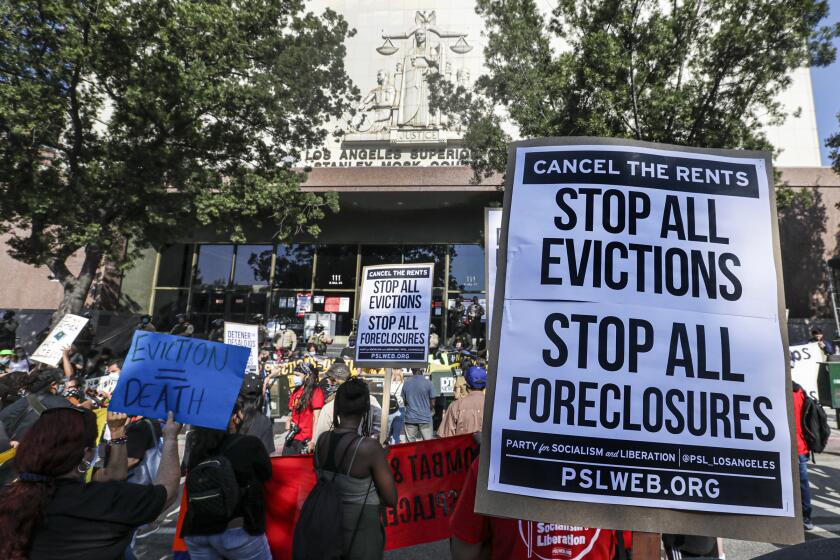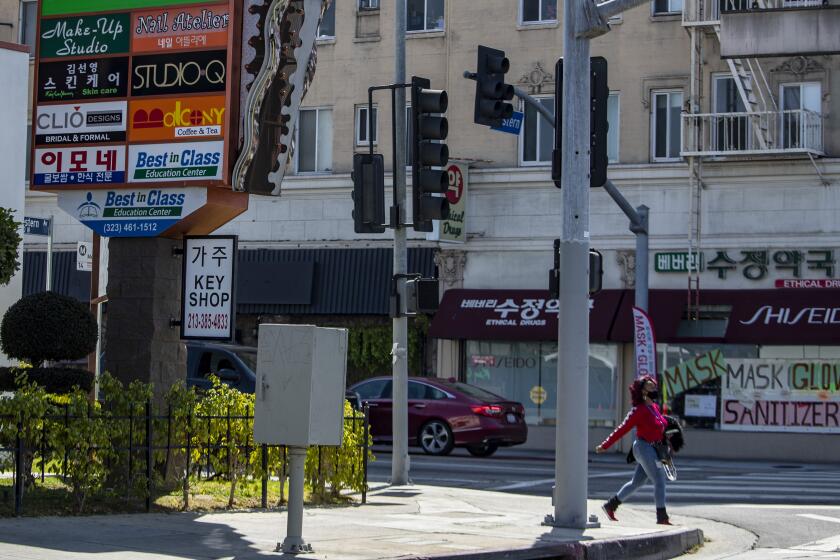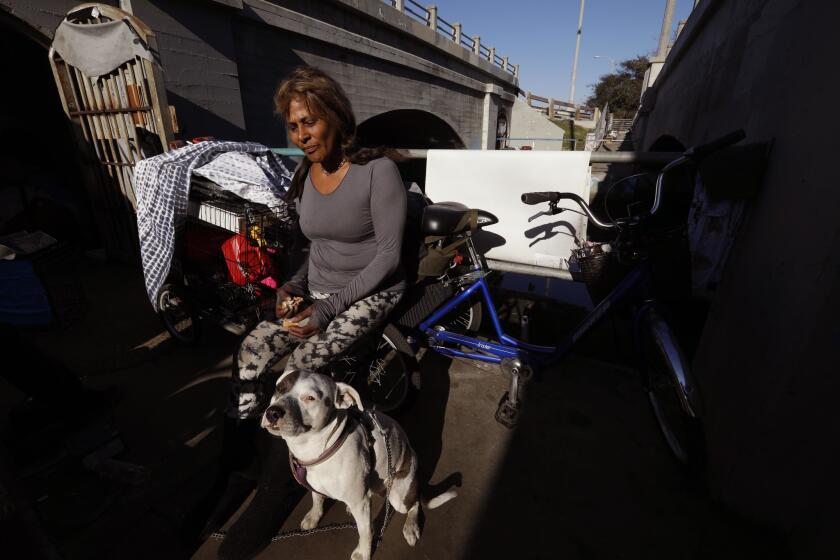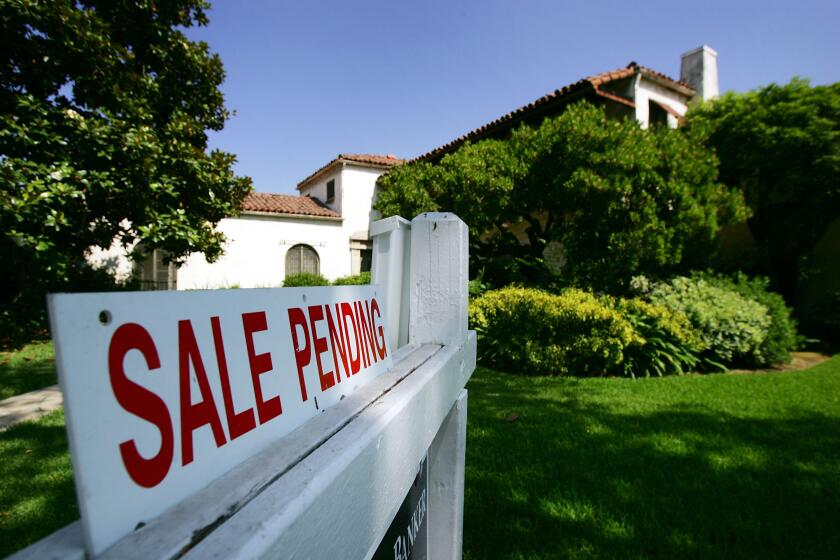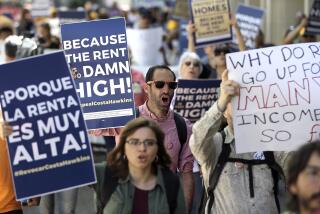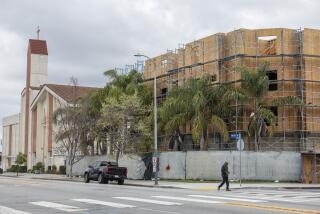Editorial: It’s time to end L.A.’s rent freeze
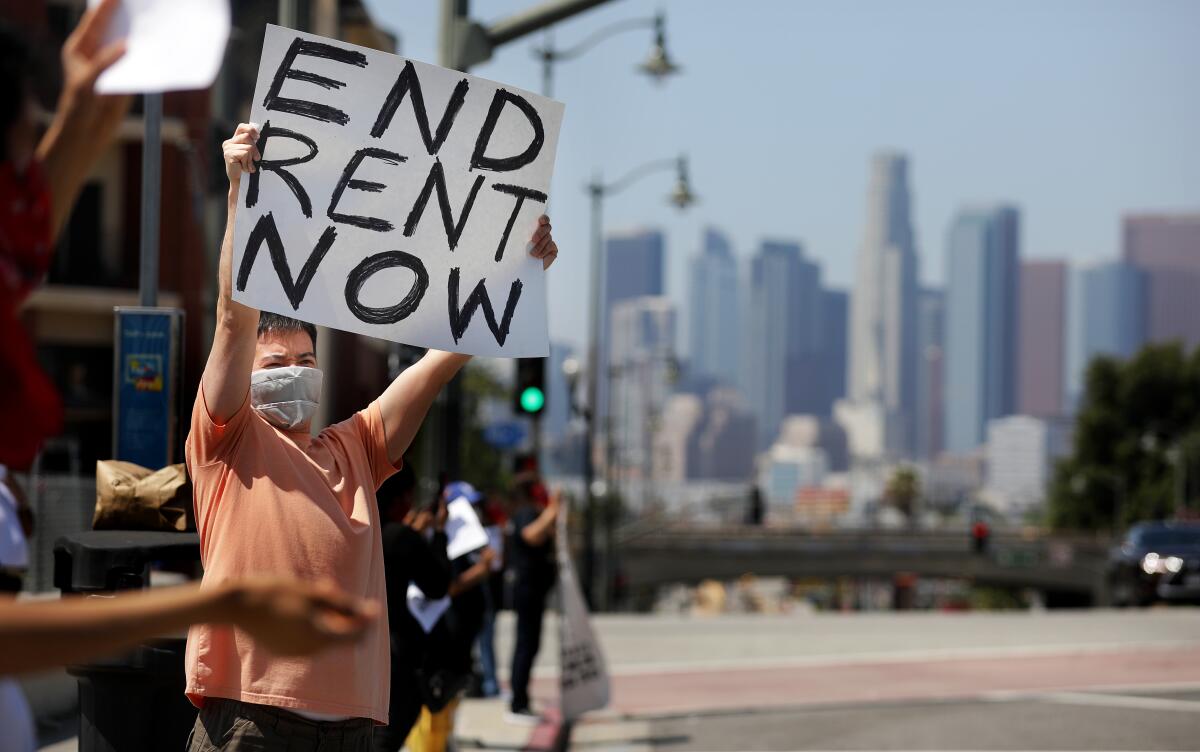
- Share via
Two things are true in Los Angeles. The rent is too damn high and landlords should be allowed to raise the rent.
On Feb. 1, owners of rent-controlled properties in Los Angeles will be allowed to increase rents for the first time in nearly four years, ending a price freeze on rent-controlled units that the city adopted in the spring of 2020 to help struggling tenants during the upheaval of the COVID-19 pandemic.
For the record:
2:10 p.m. Nov. 7, 2023An earlier version of this editorial stated that one-quarter of renter households pay more than half their income for housing. In fact, more than one-third of renter households meet that criteria.
The rent freeze has served its purpose, and it’s time to end it. A proposal to delay rent hikes for an additional six months, though well-intentioned, is not the way to address L.A.’s affordability crisis. A compromise proposal to allow rent increases between 4% and 6%, rather than 7% and 9% as was originally announced, is a better path forward, reducing the price shock for tenants while letting landlords recoup rising costs.
The lessons of the pandemic cannot be forgotten. Renter protections, rent relief and landlord assistance can keep tenants housed and landlords in business.
The fight over allowable rent increases is a symptom of L.A.’s chronic housing shortage, and that’s exactly why the City Council and Mayor Karen Bass should be continually pressing for more, faster, cheaper housing in all corners of the city, not blocking affordable projects in the face of local opposition or taking potential development sites off the table.
Los Angeles has one of the most unaffordable housing markets in the country and that’s the driving force behind the city’s homelessness crisis. Some 57% of tenants in the greater L.A. region are rent burdened, meaning they spend more than a third of their income on housing, leaving less money for savings, healthcare, transportation and other needs.
We were first-generation Latina home buyers seeking to get our family out of a crowded 450-foot apartment. Here’s how our housing search went.
Low-income tenants are extremely pinched by high rents. More than one-third of renter households in L.A. pay half their income or more to stay housed. So there is a real concern that rising rents will push households into overcrowded conditions or homelessness.
Yet the rent freeze has put the burden of the affordability crisis on landlords of rent-controlled properties, which make up nearly three-quarters of apartments in the city during a period of high inflation, along with the rising costs of utilities, garbage pickup and property insurance. During the pandemic emergency, then-Mayor Eric Garcetti had the power only to halt increases on properties built before October 1978, which are regulated by the city’s Rent Stabilization Ordinance. Landlords of newer units and single-family homes, however, were allowed to raise rents by 10% or more a year, depending on the property.
Mayor Karen Bass wants to fast-track homeless housing. So why is the city slow-walking a project in Venice?
L.A.’s pandemic state of emergency expired in February, along with the eviction moratorium. The rent freeze is slated to end in February. Under the city’s Rent Stabilization Ordinance formula, which is based on the consumer price index, the allowable rent increase is 7%, with an additional 2% if the landlord pays for gas and electricity. That would be the highest allowable rent hike since the ordinance was enacted in 1979.
Councilmember Hugo Soto-Martinez proposed delaying the rent increase to Aug. 1 while the housing department studies the formula for Rent Stabilization Ordinance rent increases. The city ordinance sets an allowable annual increase in rents of 3% to 8% (though landlords certainly don’t have to raise rents at all). But because inflation has been so low for so long, allowable increases have exceeded the consumer price index in 23 of the last 30 years, meaning rents were permitted to rise faster than inflation, according to Soto-Martinez.
The ‘house burden’ metric that compares income to shelter costs goes a long way toward explaining Southern California’s housing crisis.
The Rent Stabilization Ordinance formula was set decades ago and it’s a good idea to revisit it. But waiting for a study is not a sufficient reason to extend the rent freeze a year and a half past the end of the pandemic emergency.
Councilmember Bob Blumenfield’s compromise of 4%, with up to 2% more for landlord-paid utilities, is based on the most recent consumer price index data and is unlikely to please all tenants and all landlords. But it strikes a necessary balance and should be adopted by the City Council.
L.A. leaders need to help renters in this extremely competitive housing market, which is why strong tenant protection laws have been so important. But they also have an interest in keeping and increasing the number of property owners in the rental business. Landlords provide an essential service — housing — that Los Angeles needs a lot more of.
More to Read
A cure for the common opinion
Get thought-provoking perspectives with our weekly newsletter.
You may occasionally receive promotional content from the Los Angeles Times.
